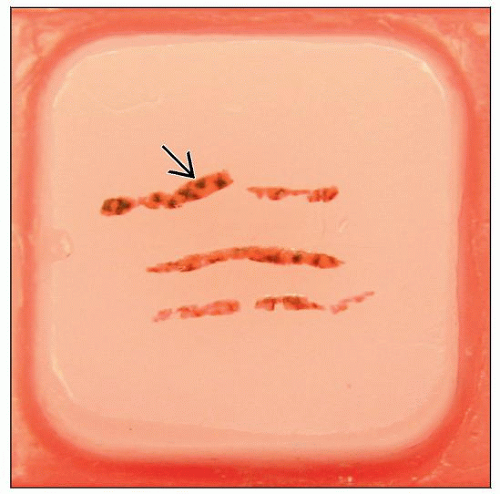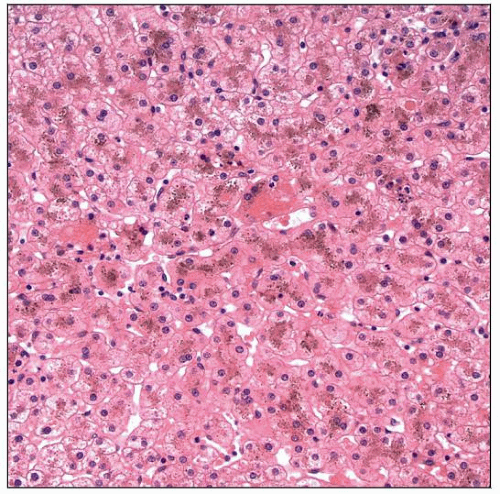Dubin-Johnson Syndrome
Joseph Misdraji, MD
Key Facts
Etiology/Pathogenesis
Mutations in CMOAT/MRP2/ABCC2 gene causes impaired biliary transport of conjugated bilirubin
Clinical Issues
Chronic or intermittent jaundice
Isolated conjugated hyperbilirubinemia
Onset usually at puberty or in teenage years
Neonates can present as cholestasis and hepatomegaly
Macroscopic Features
Grossly pigmented liver
Microscopic Pathology
Coarse granular pigment in centrilobular hepatocytes
Ancillary Tests
Pigment highlighted by periodic acid-Schiff stain with diastase digestion and by Fontana-Masson stain
TERMINOLOGY
Definitions
Defect in hepatocellular secretion of conjugated bilirubin
ETIOLOGY/PATHOGENESIS
Genetic Disorder
Autosomal recessive
Mutations in CMOAT/MRP2/ABCC2 gene, which codes for ATP-dependent organic anion transport localized to canalicular membrane
Results in impaired biliary canalicular transport of organic anions including conjugated bilirubin
Impaired glutathione excretion reduces bile salt-independent bile flow
Mutations of the ATP-binding cassette (ABC) domains may be associated with earlier onset of disease
Stay updated, free articles. Join our Telegram channel

Full access? Get Clinical Tree





